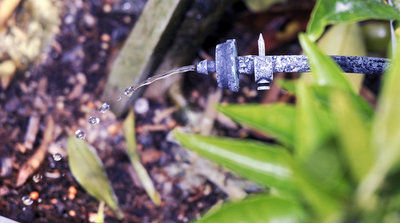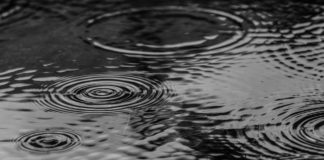Should you install your own sprinkler system? Well, would you install your own plumbing or fix your own car? Maybe you would and maybe you could, but sprinkler systems are often underestimated.
High water bills, over- or under-watered plants, damaged home exteriors and flooded areas are things I see all the time because of faulty sprinkler systems.
There are basic criteria that should be addressed before that pickax hits the dirt. Here’s a brief list of guidelines to start you on a greener, properly watered path:
Water pressure and gallons per minute: Usually, a home will have enough pressure for irrigation, but it might have too much of a good thing. High pressure can damage sprinkler components and cause breaks throughout the line.
Fortunately, you can reduce pressure with a pressure reducer. Gallons per minute determine how many heads you can put in one valve. Many folks put too many heads in one valve and wind up with brown spots or dry areas.
Determining these formulas is like prepping your house for a paint job. Without the proper groundwork, the entire landscape can suffer.
Valve placement: There are three things to determine where to put each individual valve system and how many valves to use. First, determine gallons per minute. If you have 12 gallons per minute, the next step is to figure out how many gallons each head uses. Regular lawn spray heads can put out one to four or more gallons per minute. Drip system emitters are calculated by the hour. So, if you put sprinkler heads on a lawn that puts out two gallons for each head, you can put six heads on that valve. If the area you need to cover requires 36 heads, then that’s six valves.
n Sun or shade: Shady areas and full sun areas should be on their own valves. Otherwise, you will over-water one area to adequately water another.
A compass can help determine north to south, sun-and-shade areas, especially in winter when it’s hard to tell if the sun is even out at all.
Plant type: Water-loving and drought-tolerant plants need their own valves. Also, trees sometimes benefit from a deep water bubbler system.
In designing your system, you should at the very least consult with someone or study a guide book extensively.
To drip or not to drip
Drip is good, or drip is bad. Some people love it, some people hate it. Here is a list of pros and cons:
Pros
**Drip uses less water in most cases.
**The system is easy to adapt or add to later, since it’s above ground.
**There’s no overspray onto the house.
**Fewer weeds are likely, because drip lines water right at the plant.
**It’s is usually cheaper and easier to install.
**Drip is good for hillsides or areas susceptible to erosion.
**There’s no need to dig up existing plants when installing lines.
Cons
**A drip system can be unsightly unless covered with mulch.
**With an emitter system, it’s necessary to add emitters for new plants.
**It can be harder to fertilize plants.
**Drip lines can break or be cut by animals, foot traffic or garden shears.
**Emitters can become plugged; plus, since the surrounding soil is dry, you might not notice an inoperative emitter until the plant is compromised.
**A plant’s root system or drip line could outgrow the original placement.
**Drip can be difficult to use with large groundcover areas.
**You’ll need to check filters, and you have to be careful when digging in the soil or adding plants.
Licensed landscaper and Santa Cruz County resident Bruce Nash is the owner of Sprinkler Solutions. He has more than 20 years’ experience in irrigation repair and installation. He can be reached at 408-921-1543.













